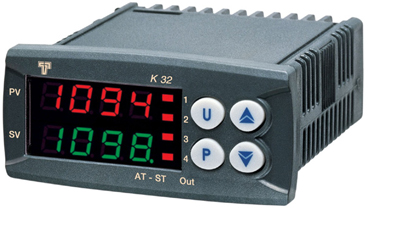ASCON TECNOLOGIC K31 K32, CONTROLLER AND MINI-PROGRAMMER 78X35 MM:
To meet the diverse needs of customers and its production processes, ASCON TECNOLOGIC has developed two auto-tune algorithms (in addition to the self adaptive tuning): Auto-tuning the oscillatory and the “fast” type.- the oscillatory autotuning is classic that requires you to do 3 swings around the set point. This type of tune is especially accurate and can be started at any time, but is time-consuming and generates an overshoot that, with no exaggeration, may be undesirable. Auto-tuning type fast is much faster and therefore is particularly suitable for very slow processes. Another particularity is to not generate overshoot (the algorithm tries to maintain the PV below the set point). Finally autotuning Fast, applied in multi-loop systems, suffers much less of “dragging effect” produced by the neighboring loop and therefore is particularly suitable for machines such as extruders, hot-runner, continuous furnaces, etc.
MECHANICAL PROPERTIES OF TEMPERATURE:
- Housing: plastic, self-extinguishing UL 94 V0:
- installation: mounting on Omega DIN rail
- Size: 4 DIN modules, 70 x 84 mm, prof. 60 mm
- Display: 4 Digit Red h 12 mm
- weight: 180 g approx
- Rear terminal block: 24 screw terminals (screw M3, for cables from 0.25 to 2.5 mm2 or from AWG 22 to AWG 14)
- degree of protection: – IP Front protection 40 to EN 60070-1 for indoor locations – Terminals: IP20




